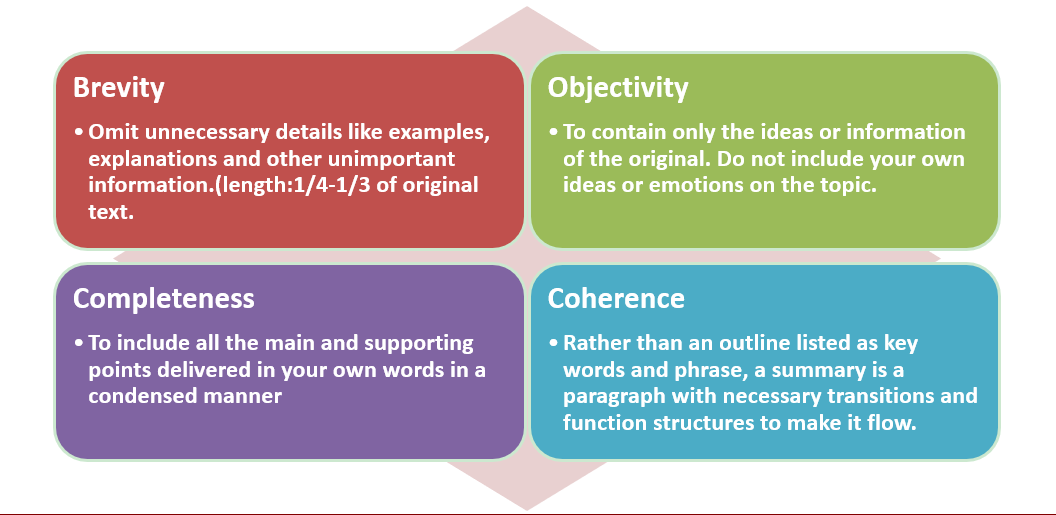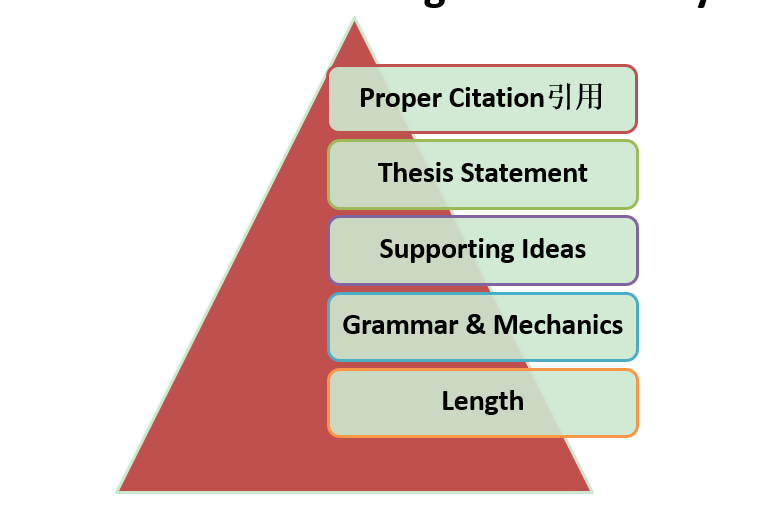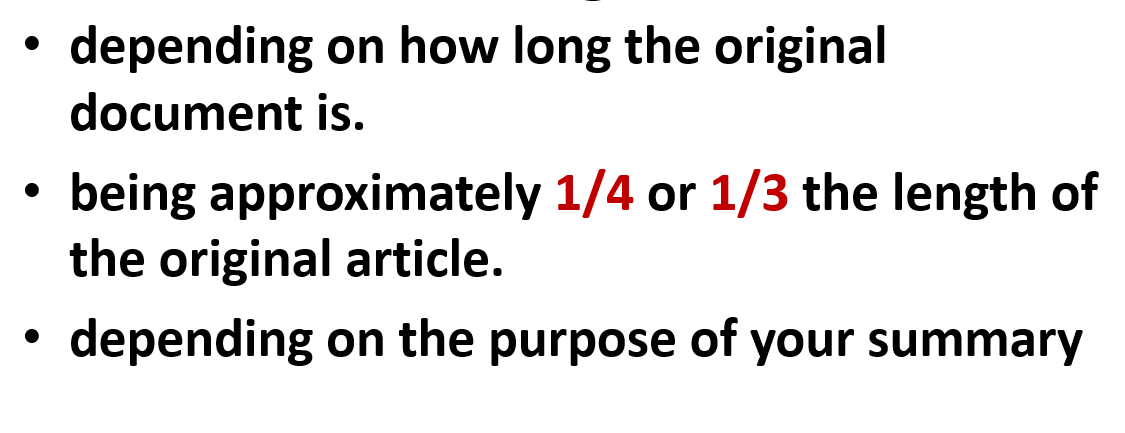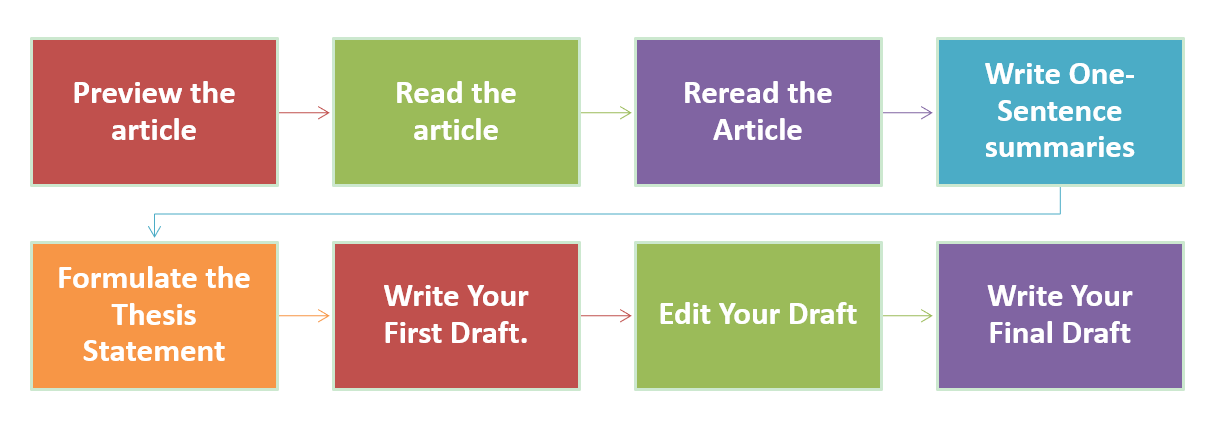Practical Writing
Summary
Definition
A summary is a brief restatement of the essential thought of a longer composition.
Reproduces the theme of the original with as few words as possible
When one writes a summary, one should not interpret or comment.
All one has to do is to give the gist主旨,要点 of the author’s exact and essential meaning.
A shortened or condensed version, in your own words, of what you have read.
Write in the third person
A tool to understand what you have read.
Writing a summary
•Shorter than the original
•Includes only the main points
•Objective
•Includes in-text reference•In the writer’s own words
•Skills practiced: note-taking,paraphrasing (using your own words and sentence structure), condensing
Features of summary

Characteristics of a good summary

Length

Process of Writing a Summary

Samples



